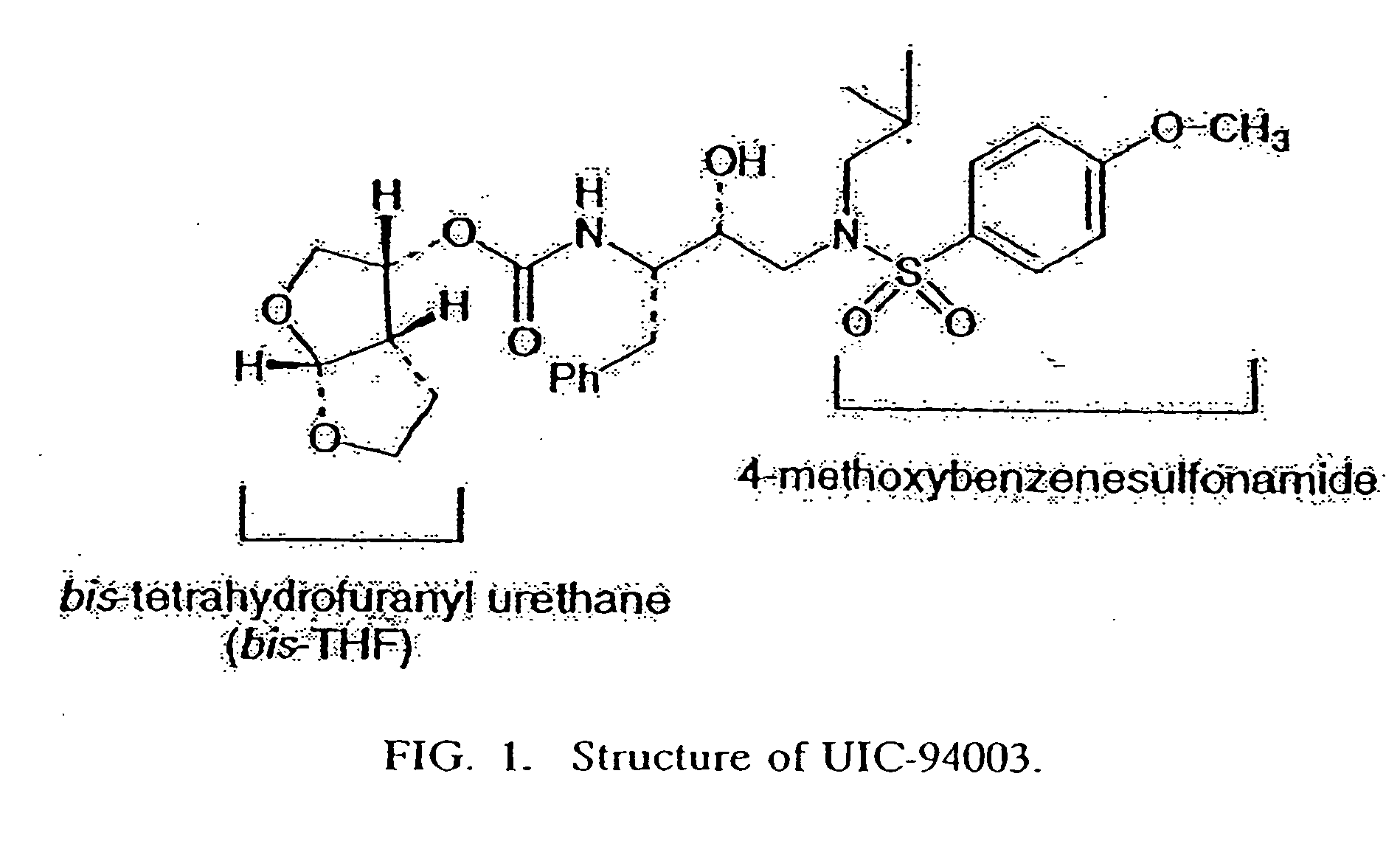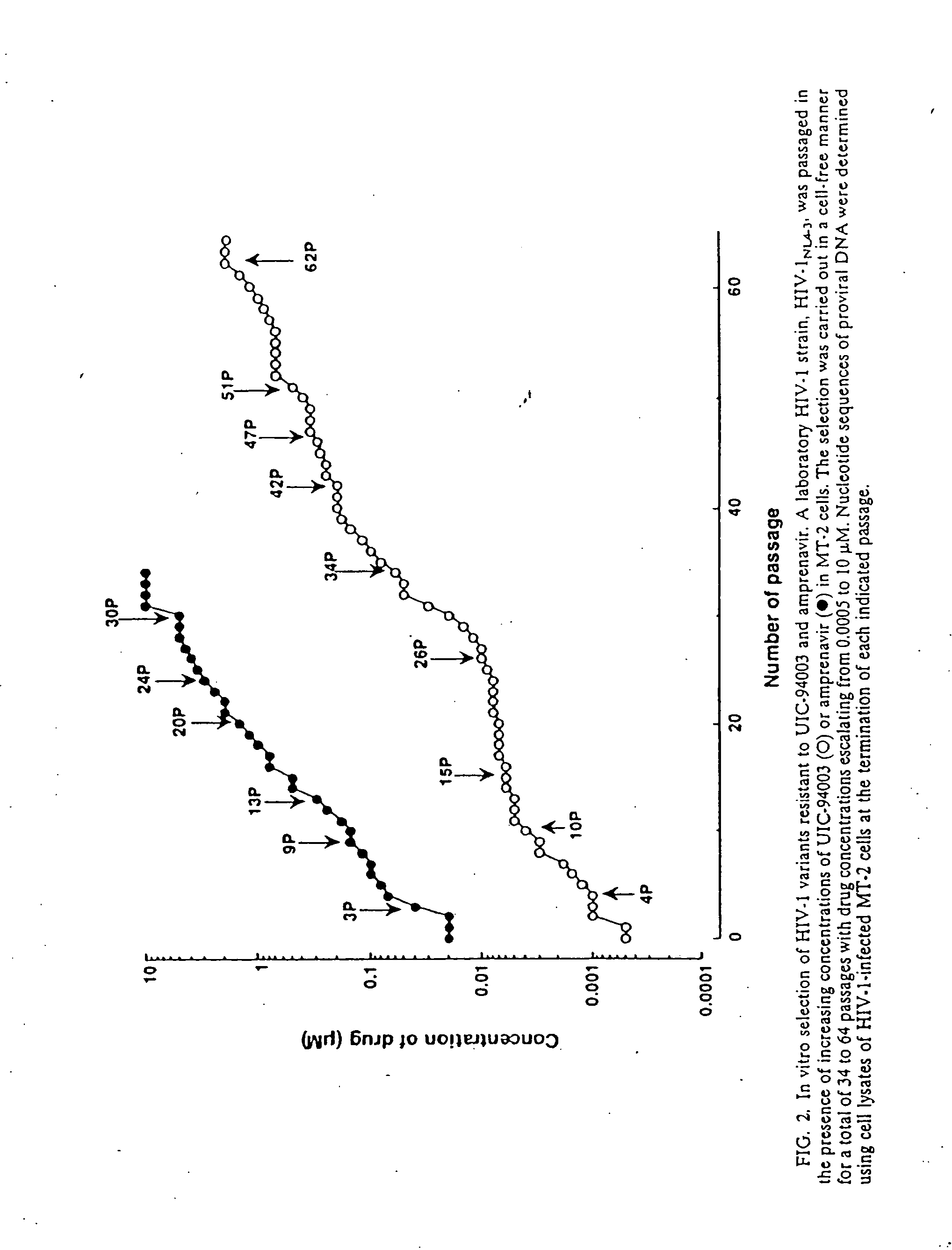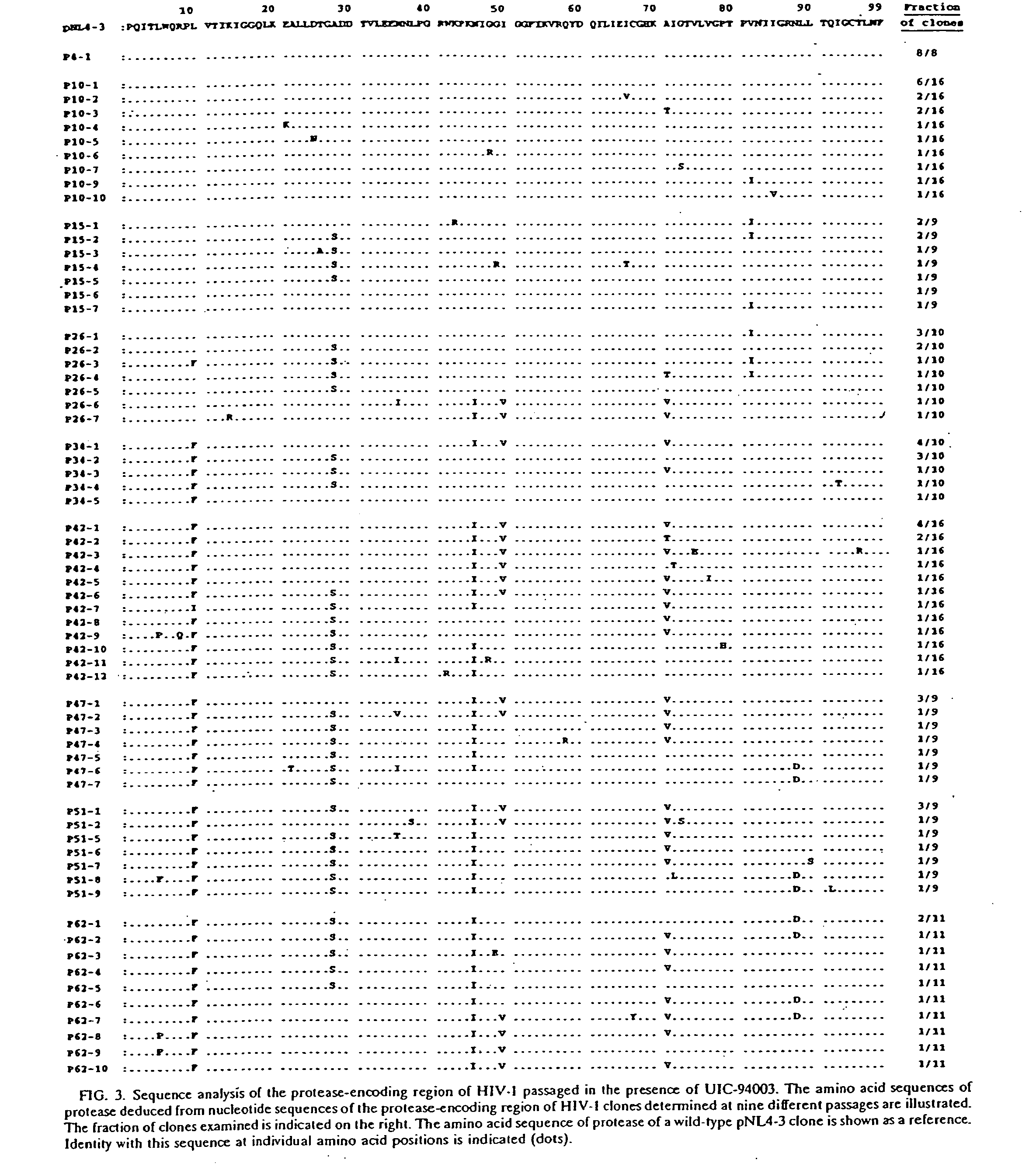Resistant-repellent retroviral protease inhibitors
a protease inhibitor, resistance-repellent technology, applied in the direction of phosphorous compound active ingredients, peptides, molecular structures, etc., can solve the problems of neurological deterioration, death of infected individuals, and severe compromising of immune systems
- Summary
- Abstract
- Description
- Claims
- Application Information
AI Technical Summary
Benefits of technology
Problems solved by technology
Method used
Image
Examples
example 1
[0340] This example describes the antiviral activity, resistance profile, and selection of resistance mutations for a resistance-repellent PI (UIC-94003, FIG. 1; also referred to as compound 1, vide infra). Also described in this example is a preliminary analysis by computer modeling of the structural basis of the resistance-repellent properties of 1.
[0341] Compound 1 was originally identified as a potent protease inhibitor of multidrug drug resistant HIV mutants using a novel biochemical fitness profiling strategy described in Erickson and Gulnik, WO 99 / 67417, which application is included herein in its entirety. The biochemical resistance profile (Ki,mutant / Ki,wild type) and biochemical fitness, or vitality, profile (Ki,mutant / Ki,wild type x (kcat,mutant / Km,mutant) / (kcat,wild type / Km,wild type) of compound 1 is described in Table 1 in Example 13 (as Compound 32) of Erickson and Gulnik, vide supra. Antiviral potencies against wild type and multi-drug resistant HIV strains are desc...
example 2
[0359] This example illustrates the method by which experimentally-determined crystal structures of the same inhibitor in complex with wild type and mutant species of HIV protease can be compared and analyzed for the existence of a three-dimensionally conserved substructure.
[0360] The structures of wild type HIV-1 protease and a mutant, V82F / I84V, HIV-1 protease, both in complexes with the inhibitor shown in FIG. 1 were determined using conventional x-ray crystallography techniques. The structures were analyzed by means of (a) an overall superposition of the atoms of the protein structures; and, (b) a study of the distances from polar atoms of the inhibitors to polar atoms of the protein. This analysis requires three dimensional atomic coordinates of the protein structures and of the bound inhibitor.
[0361] The superposition of the protein structures was performed in a two step process: 1) the distance between all pairs of corresponding Cα atoms (Cα atom of residue number 1 in one ...
example 3
[0365] This example illustrates the method by which experimentally-determined crystal structures of two different inhibitors in complexes with wild type HIV protease can be compared and analyzed for the existence of a three-dimensionally conserved substructure. The structures of wild type HIV-1 protease in complexes with inhibitor 1 and with Amprenavir (inhibitor 2) were analyzed by means of (a) an overall superposition of the protein structures; and (b) a study of the distances from polar atoms of the inhibitors to polar atoms of the protein.
[0366] The superposition of the protein structures is performed in a two step process: 1) the distance between all pairs of corresponding Cα atoms (Cα atom of residue number 1 in one protein to Cα atom of residue number 1 in the second protein; Cα atom of residue number 2 in one protein to Cα atom of residue number 2 in the second protein; and so on) of the polypeptide chains is minimized by means of a least-square algorithm; 2) the superposit...
PUM
 Login to View More
Login to View More Abstract
Description
Claims
Application Information
 Login to View More
Login to View More - R&D
- Intellectual Property
- Life Sciences
- Materials
- Tech Scout
- Unparalleled Data Quality
- Higher Quality Content
- 60% Fewer Hallucinations
Browse by: Latest US Patents, China's latest patents, Technical Efficacy Thesaurus, Application Domain, Technology Topic, Popular Technical Reports.
© 2025 PatSnap. All rights reserved.Legal|Privacy policy|Modern Slavery Act Transparency Statement|Sitemap|About US| Contact US: help@patsnap.com



